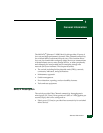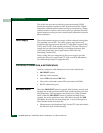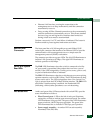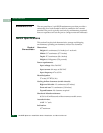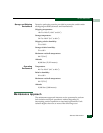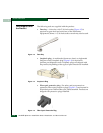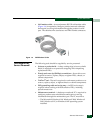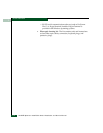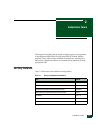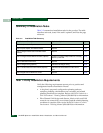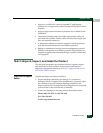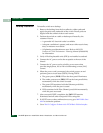
1
General Information
1-9
General Information
• A modular design that enables quick removal and replacement of
FRUs without the use of tools or equipment.
• System alerts and logs that display switch and Fibre Channel link
status at the EFCM Basic Edition interface.
• Diagnostic software that performs power-on self-tests (POSTs)
and port diagnostics (loopback tests).
• An RS-232 maintenance port at the rear of the switch (port
access is password protected) that enables installation or service
personnel to change the switch’s IP address, subnet mask, and
gateway address.
These parameters can also be changed through a Telnet session,
access for which is provided through a local or remote PC with an
Internet connection to the switch.
• Data collection through the EFCM Basic Edition interface to help
isolate system problems. The data includes a memory dump file
and audit, hardware, and engineering logs.
• Beaconing to assist service personnel in locating a specific port or
switch. When port beaconing is enabled, the amber LED
associated with the port flashes. When unit beaconing is enabled,
the system error indicator on the front panel flashes. Beaconing
does not affect port or switch operation.
• SNMP management using the Fibre Channel Fabric Element MIB,
Transmission Control Protocol/Internet Protocol (TCP/IP) MIB-II
definition (RFC 1157), or a product-specific private enterprise
MIB that runs on the switch. Up to six authorized management
workstations can be configured through the EFCM Basic Edition
interface to receive unsolicited SNMP trap messages. The trap
messages indicate product operational state changes and failure
conditions.
Tools and Test Equipment
This section describes tools and test equipment that may be required
to install, test, service, and verify operation of the product. These
tools are supplied with the product or must be supplied by service
personnel.



